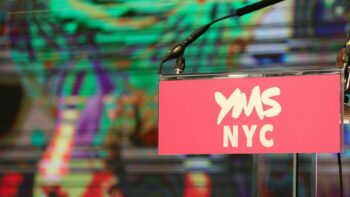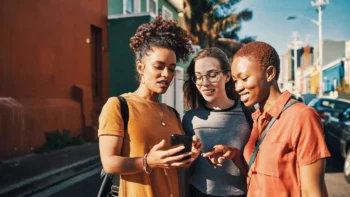
62% Of 16-24S Prefer Books as Physical Products
Voxburner Content Team
Article Highlights
Be the first to access new posts and exclusive content
Recent Voxburner research has found that 62% of 16-24s prefer buying books over ebooks. When asked which products currently available for download were preferred as physical objects, 62% agreed with books. Magazines and newspapers collectively had 47% prefer the physical form. Considering magazines are visually more attractive due to their heavy use of images and glossy paper, these statistics show text-heavy books still have an audience with young people.
We’ve explored the pricing of e-books being too high for the new generation – a key factor for both those who read ebooks, and others who may be deterred because of it – but it’s not the only reason.

There is less affection towards electronic versions of books. Whereas age is shown in the spine of each book – and commitment by the size of one’s bookshelf – digital files have no distinguishing characteristic. Most books adhere to the same fonts, as defined by the standards of ebook readers, and e-ink displays are void of any images besides the cover due to the lack of colour.
With tablets like the iPad and Kindle Fire offering HD screens, magazines and books can be given better visual treatment, though there is still a lack of character that young people have grown up with through school and books at home.
Considering 62% prefer physical books, 45% of those surveyed don’t own a device that can read ebooks – this includes both e-readers and smartphones. It’s possible that young people haven’t experienced the format, still have some warming up to do, or don’t know their smartphone can read ebooks. What’s more interesting is that 38% of 16-24s prefer e-books over the physical form. The format’s practicality, adoption with large retailers and ease-of-use is making the transition a smoother experience from paper to e-ink.
Things to take away
- Not much can be done to replicate the feeling of a physical book with digital books. While it sounds like silly nostalgia to not want to give up on heavy paper books, the ebook isn’t as attractive – curling up next to the fire with a Kindle doesn’t have the same ring to it. This doesn’t mean there aren’t positives to being an e-reader supporter. E-book readers have the capacity to carry thousands of books while still being incredibly lightweight.
- As e-readers become more intelligent, they open doors for offering new content. Imagine reading a book, and after a mention of a famous Italian structure, press on the name and have a Wikipedia description of its history appear, with an image. Future authors can use this kind of connectivity to offer artwork, audio clips or videos as well. Better understanding the stories and what is being talked about in a book – fiction or non-fiction – can offer another level of enjoyment. While physical books can have pictures throughout – usually placed in the middle, outside the context of the story – digital offerings like hyperlinks, image galleries and video will engage the reader even more.
- The experience of a bookstore – physically standing in a room filled with books – is still precious. While it may seem a waste of money for a bookstore to encourage digital downloads in-store, for young people who have adopted the new technology with open arms this could be a great addition. Being able to pick up a book physically, flip through it and buy the digital copy via a QR code or something similar – without having to carry it home – not only solidifies the idea that they are still purchasing a book, but also shows a brand’s adoption of new technology. Punishing the adopters of e-reading technology is not the way to go.
Subscribe to Voxburner+ now to access the latest reports, exclusive stats and a network of leading youth marketers here.
Image credit: spykster



